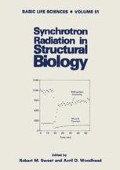Abstract
The manufacture of x-ray mirrors is a rather specialized branch of the optical fabrication industry. As those who have had to deal with the procurement of these components well know, there are only a handful of optical companies who supply most of the grazing incidence optics in use at the synchrotron light source facilities in the United States. There are several reasons for this. Firstly, production of a grazing incidence asphere is usually a one-of-a-kind job. It does not lend itself to mass production methods. Not many optical houses are willing to commit the necessary resources for the fabrication of one-of-a-kind components. Secondly, because it is a one-of-a-kind job, it is labor-intensive, which drives up the cost on each individual item. A great deal of engineering and planning must go into the fixturing and design of the computer control program for numerically-controlled diamond turning machines for production of metal optics. Most end users tend to view the procurement of aspheric x-ray optics as a “catalog” process, i.e., that all one needs to do is choose the desired parameters from the manufacturers’ catalog of stock items and then expect delivery of the finished item (after considerable delay beyond the initial delivery date), which will then perform flawlessly as desired. In reality the procurement process is quite complex, starting with the initial tradeoff studies to choose between metal optics or glass-ceramic optics, continuing with the selection of a vendor who can best do the job, monitoring the progress of the job and finishing it with the final quality assurance inspection. Many times the component fails to pass the inspection and it is returned for further rework.
Access this chapter
Tax calculation will be finalised at checkout
Purchases are for personal use only
Preview
Unable to display preview. Download preview PDF.
References
Biegen, J. F., and Smythe, R. A., 1988, High resolution phase measuring laser interferometric microscope for engineering surface metrology, in: “Scanning Microscopy Technologies and Applications,” E. Clayton Teague, ed., Proc. Society of Photo-Optical Instrumentation Engineers, Bellingham.
Church, E. L., Jenkinson, H. A., and Zavada, J. M., 1979, Relationship between surface scattering and microtopographic features, Opt. Eng., 18: 125.
Church, E. L., and Takacs, P. Z., 1986, The Interpretation of glancing incidence scattering measurements, Proc. of the Soc. of Photo-Optical Instrumen. Engs., 640: 126.
Church, E. L., and Takacs, P. Z., 1986, Use of an optical-profiling instrument for the measurement of the figure and finish of optical-quality surfaces, WEAR, 109: 241.
Eastman, J. M., and Zavislan, J. M., 1983, A new optical surface microprofiling instrument, Proc. of the Soc. of Photo-Optical Instrumen. Engs., 429.
Glenn, P., 1985, Space telescope performance prediction using the OSAC code, in: “Large Optics Technology,” Gregory M. Sanger, ed., Proceedings of the Society of Photo-Optical Instrumentation Engineers, Bellingham.
Jones, K. W., Takacs, P. Z., Hastings, J. B., Casstevens, J. M., and Pionke, C., 1987, Fabrication of an 8:1 ellipsoidal mirror for a synchrotron x-ray microprobe, in: “Metrology: Figure and Finish,” Bruce Truax, ed., Proc. of the Society Photo-Optical Instrumentation Engineers, Bellingham.
Sommargren, G. E., 1981, Optical heterodyne profilometry, Appl. Optics, 20: 610.
Wyant, J. C., Koliopoulos, C. L., Bushan, B., and George, O. E., 1984, An optical profilometer for surface characterization of magnetic media, ASLE Trans., 27: 101.
Author information
Authors and Affiliations
Editor information
Editors and Affiliations
Rights and permissions
Copyright information
© 1989 Plenum Press, New York
About this chapter
Cite this chapter
Takacs, P.Z. (1989). Understanding the Performance of X-Ray Mirrors. In: Sweet, R.M., Woodhead, A.D. (eds) Synchrotron Radiation in Structural Biology. Basic Life Sciences, vol 51. Springer, Boston, MA. https://doi.org/10.1007/978-1-4684-8041-2_27
Download citation
DOI: https://doi.org/10.1007/978-1-4684-8041-2_27
Publisher Name: Springer, Boston, MA
Print ISBN: 978-1-4684-8043-6
Online ISBN: 978-1-4684-8041-2
eBook Packages: Springer Book Archive

